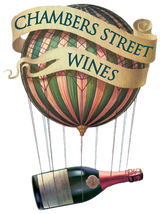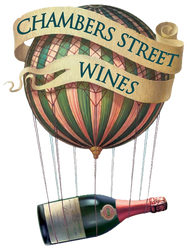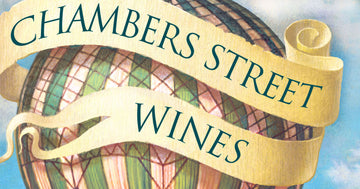East of the Neusiedlersee: Pittnauer and Preisinger
7/8/20 -

Growing up in a Loire Valley-centric household, I wasn't exposed to much Austrian wine, just a lot of Muscadet and Chinon. Well into my tenure at the family shop, I was aware of tall bottles of Gruner Veltliner that I packed into orders during my "stock years," and of course the occasional Wachau Riesling, but my inexperience with the wines of Austria stretched on for quite a while! Eventually, as I developed a palate and an interest in wine (mostly from meeting the winemakers and becoming enamored with their humility, hard work, and dedication to regenerative agriculture), I attended some tastings and found I quite liked the wines and the people of Austria. This came as no surprise, as I had long ago decided my favorite composer was Gustav Mahler, and my favorite writer Robert Musil (I'm not as unwavering on these now that I've lived, listened and read a bit more, but for a time I was convinced that Vienna was my spiritual home!). Still, my knowledge of the Austrian wine scene was embarassingly underdeveloped. This all changed when I had the great honor and pleasure of working with our esteemed former colleague and manager, Cari Bernard. Her enthusiasm for the new generation of winemakers from lesser known regions of Austria was contagious, and she opened and shared so many delicious bottles with me, that I began finding myself gravitating to a good Blaufrankisch as much as a Loire Valley Gamay (of course why not both!).
Of the wines Cari recommended to me, I found I was generally always happy with a bottle from Brigitte and Gerhard Pittnauer or Claus Preisinger. Until I spoke to both Gerhard and Claus last week, I had no idea that they were a 5 minute walk from each other, I just found their wines made me feel good and also impressed me with complexity and depth. I'm excited to be involved now in the selections in our Austrian section here at Chambers Street, and thought it would be fitting to make my first email on Austrian wines a exposé on these two estates.
First, a bit about the place, brought to you by our own Ben Fletcher:
"You are far from alone if “Austrian wine” conjures ideas of mountain vistas and high-altitude vineyards, but the east side of the Neusiedlersee in Burgenland is far from alpine. Here, at the heart of the western Pannonian basin, summers are hot and dry with plenty of sunlight, and winters are mild, with little snow. The terrain is largely flat, and the soils are young and predominately composed of silty and sandy gravels. Traditionally, these soils have been planted with Rotburger (also called Zweigelt), Blaufränkisch, and Sankt Laurent."
And now, a bit about the people:
Pittnauer
The Pittnauer family traditionally practiced mixed agriculture, with vineyards and wine production as a part of the output. Gerhard left school at 16 years old and 2 years afterwards, his father unfortunately passed away, leaving him and his older sister in control of the domaine. A bit later they decided to split the enterprise. In Burgenland there was always a tradition of polyculture, with fields and vineyards split between children equally. In the beginning, he had 3.8 hectares, but was ambitious and figured it would be hard to make a living from such a small surface area, especially if focusing on quality. Now, Gerhard and his wife Brigitte farm about 18 hectares in total, along with some long term agreements with organic and biodynamic famers in the area.
The winery is located on the eastern shore of the Neusiedlersee. The soils on the eastern side of the lake are quite light, says Gerhard, with concentrations of iron, sand, clay and limestone. Typically the Blaufrankisch is planted in clay, and the Pinot and Sankt Laurent usually favor chalk and limestone soils. South of the village of Gols, there are plains that are warmer, and in the north is a plateau. The soils and exposition on this plateau are best suited for wine growing. When Gerhard took over the family estate, 3.2 of the 3.8 hectares were in the plain (my guess is all of their crops were in the fertile plain), but as global warming has influenced the climate, and due to Gerhard's dedication to high quality grapes, most of their vineyards are now planted on plateaus.
The estate, which has been organic for a long time, converted to biodynamic farming in 2006, with certification (Respekt/Biodyvin) coming in 2009. In terms of winemaking, Gerhard says the winemaking approach is in general not "technical." The Pittnauers believe in "creative potential" and are very artistic in a way, with more tasting and talking, and less analysis. Fermentations are always with native yeast, and sulfur use is minimal. Having tasted the Pittnauer wines over several vintages now, it's clear that they are adept at making wines that are honest, edgy, and always presentable and stable. When you consider that Gerhard's curiosity led him to try skin fermentation in 1997, well before the orange wine craze grew to it's current level, and that they have worked with no or low levels of SO2 for so long, this shouldn't come as a surprise. They've spent some time in the game, as they say, and in my opinion, they're only getting better!
Claus Preisinger
Claus Preisinger was born about 2 decades after Gerhard Pittnauer, so the history of this young domaine is obviously different, but given their vicinity, and a similar state of mind, the wines sing a very familiar tune. Claus' family was not involved in winemaking, though they always had a little vineyard like every small family in the area. He got his start in wine in 2000, working as an assistant at Nittnaus, an estate with deep history in the region, not just in terms of farming and winemaking practices, but in the mentorship and nurture that Hans Nittnaus has offered to younger winemakers in the region. When he decided to set off on his own and establish an estate, there was no possibility to rent vineyards, so he had to go looking for them. He ended up finding sites from varied micro-climates and diverse soils. Some are on the northern shore of the Neusiedlersee, others on the western shore (more limestome and schist), as well as some on the eastern shore (more gravel and loam). Now, Claus has about 20 hectares in his estate, with an additional 10 by contract with a local organic grower who allows Claus to do Biodynamic treatments. Apparently this particular grower doesn't believe much in biodynamics, but he doesn't mind the results!
From enjoying his wines and chatting with him on the phone, one gets the sense that Claus is curious and still growing very much as a winemaker in the region. He has plans to plant Furmint, and expressed some interest in Chenin Blanc and Savagnin (yes please!) as the latter is indeed part of the Traminer family, and should do well in some of his parcels. Sulfur use is very low, with some wines receiving no addtion of sulfites and others (most of the reds) seeing 5mg before bottling (truly a small amount!). In 2014 he stopped filtering most of his wines. As he explained, from the drinking side, he felt "why take something out that gives the wines more flavors and texture?" Farming has been without pesticides or herbicides for a long time now, so the future of this domaine is bright!
Well there it is folks! My first Austrian-themed newsletter. I truly hope you enjoy these wines as much as I do and do stay tuned for more articles in the future.
Ciao, Servus, Pfiat di! -Eben Lillie
** Thanks to Ariel and the Savio Soares team for their ongoing work with Brigitte and Gerhard Pittnauer, Volker Donabaum from Volker Wine Company, for his work with Claus Preisinger, Ben Fletcher for the geology and history lessons, and of course a big thanks to Brigitte Pittnauer for her thoughtful and informative emails, Gerhard "the Dude" Pittnauer, and Claus Preisinger for spending time on the phone with me after long days at work! **


